We Repurposed Our Old Home into a 4-Storey That Saves Rs 72000 on Power & Water Bills
Bengaluru residents Sajitha and Mahesh built their eco-friendly new home by repurposing their old one, with help from architecture firm Destination Designs.
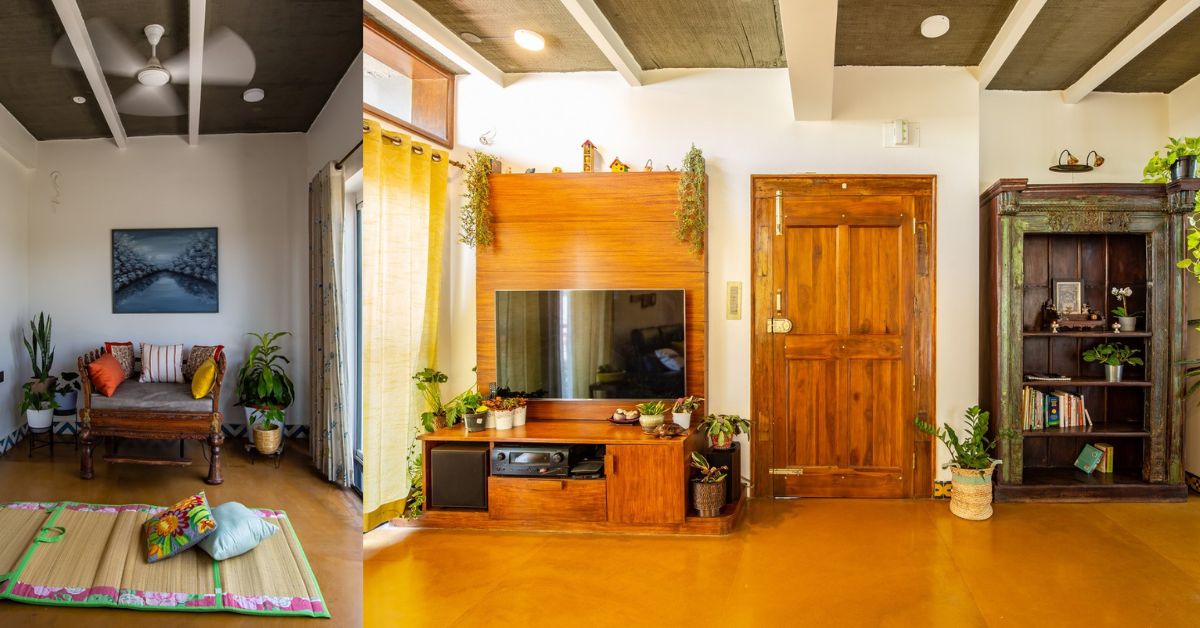
When rebuilding their family home, Bengaluru residents Mahesh and Sajitha decided they would imbibe sustainability wherever possible. And so, their new home is a reflection of their 40-year-old house, but with environment-friendly aspects from the floor to the ceiling.
What’s unique about this house is the way it was rebuilt — everything that was salvageable from the old house was reused in the new one. The home is also mostly self-sufficient in its water and electricity needs.
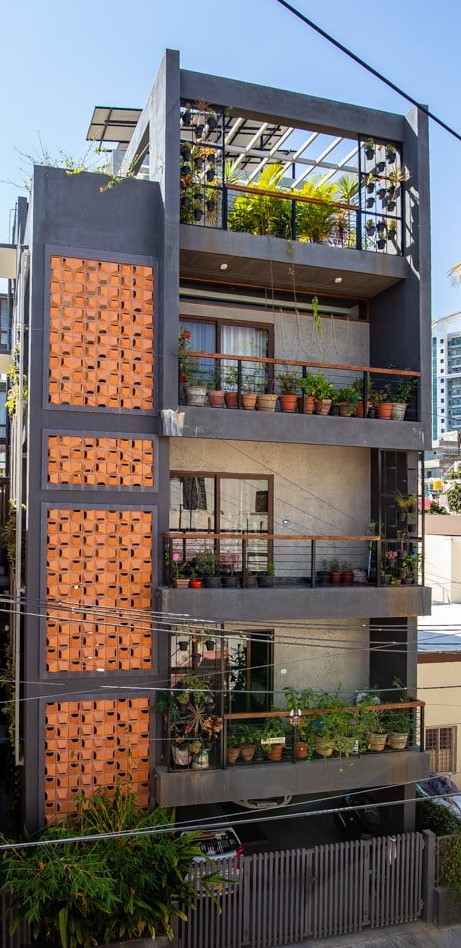
Sajitha says she wanted the house to be warm, sustainable, and easy to maintain.
“Since our house was old, we broke it down and reconstructed it. All we wanted was a simple home that was easy to care for since both my husband and I are working. We didn’t want anything fancy, where people would be afraid to touch anything. We keep having people over, including kids, so comfort was our top priority,” 46-year-old Sajitha tells The Better India.
For the project, they approached Jyothika Baleri, principal architect of Destination Designs.
Harnessing the run and the sun
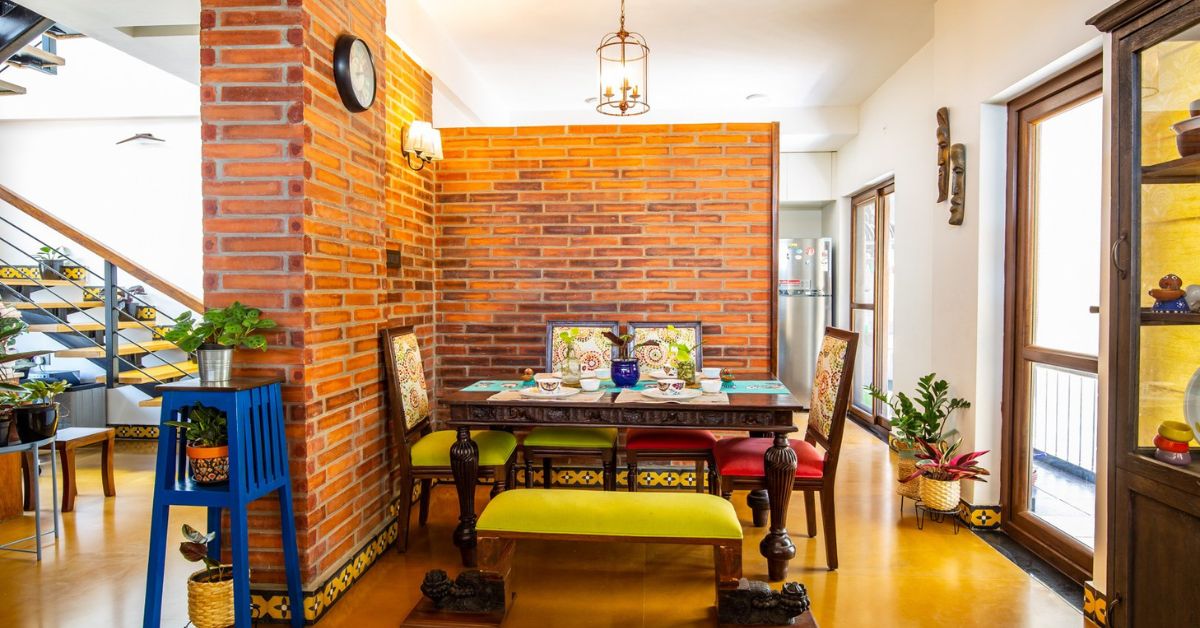
The architects carefully took down every door and window of the old house to reuse in the new one, Sajitha says. “Everything salvageable and made of teak wood was reused. Jyothika also built us a rainwater harvesting pit, providing for all our water needs during the rainy season. We also have solar panels on the roof, which supply electricity to most of the house, like the lift,” she says.
To ensure that the house is sustainable, the architects built a sump pit to harvest rainwater. The pit has a capacity to store 8,000 litres of water.
“We have two tanks — one for Cauvery water and one for rainwater. During the rainy season, or whenever the tank has water, we only use that for all household purposes. It is filtered and even used for drinking,” says Sajitha.
The roof area, of about 700 square feet, has been fitted with solar panels.
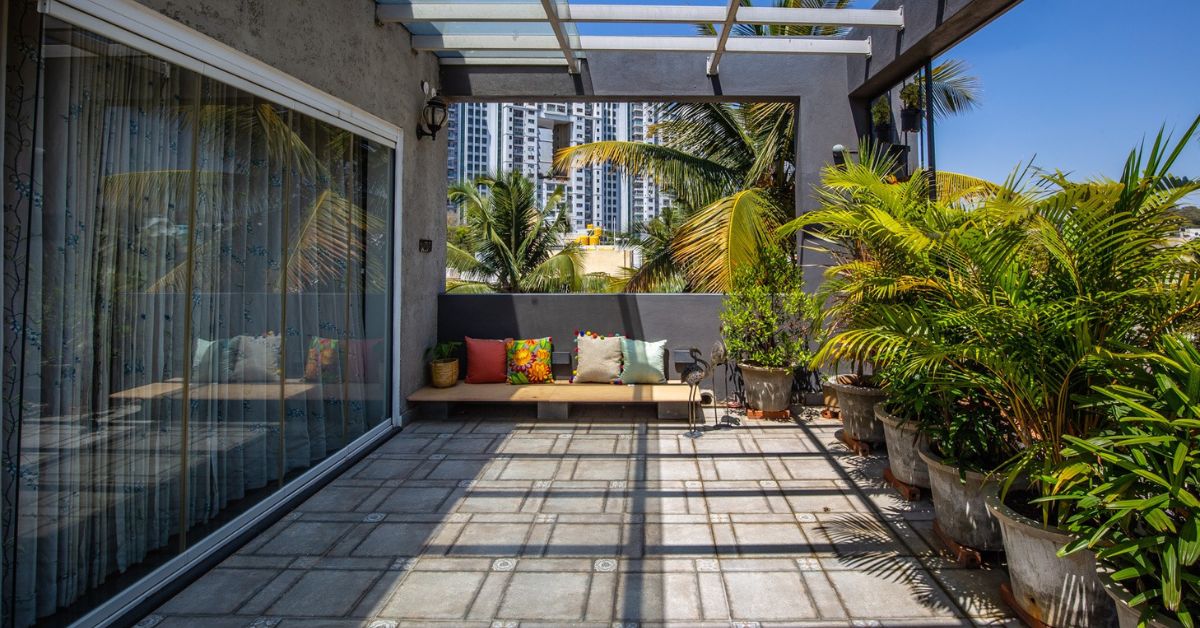
“We have two power sources — solar power and BESCOM (Bangalore Electricity Supply Company Limited). The solar power is even connected to the grid, and the extra power is transferred there. Most of our heavy electricity load is connected to the solar line. The lift, sump motor, the exterior, and the stairway lighting are all powered by solar energy,” says Sajitha.
Meanwhile, Mahesh notes that this way, they save at least Rs 6,000-7000 per month on their bills, which amounts to Rs 72,000 saving a year.
Where western meets traditional
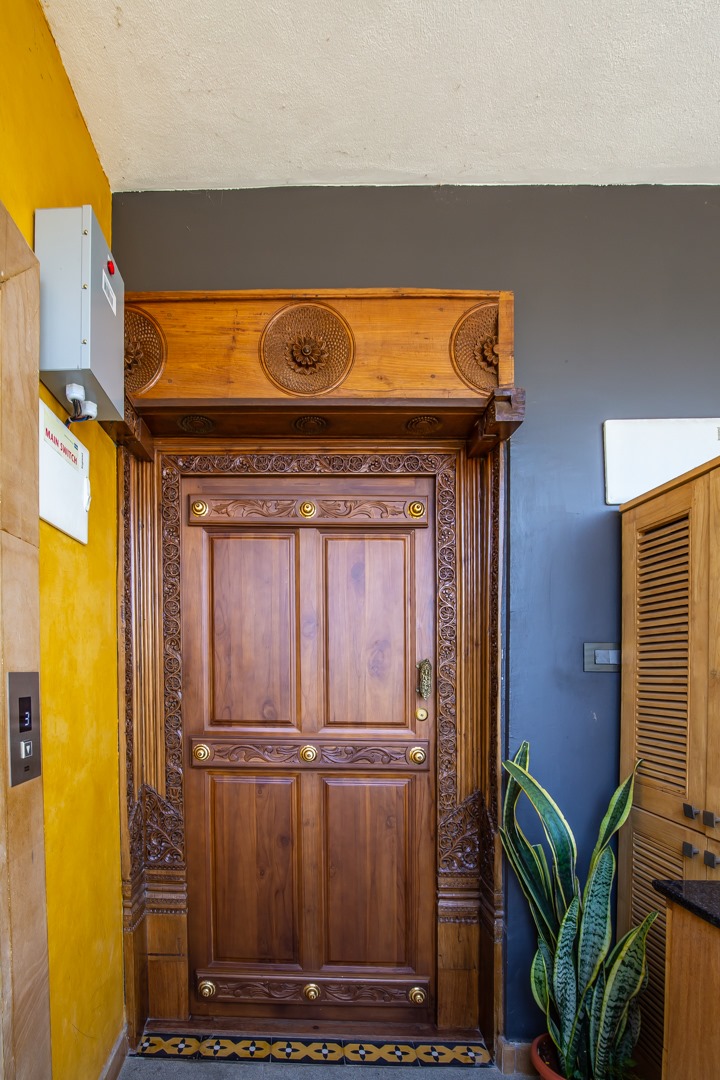
It took about a year to build the project — it started in February 2018, and was completed in May 2019. Jyothika, who specialises in rebuilding and remodelling, says that they reuse and upcycle items from the old houses in all their projects. They also specialise in Chettinad architecture.
“Chettinad homes are an explosion of colour and majesty. They are magnificent architectural wonders. They have decorative facades, and many of them show shades of Victorian, Georgian and Palladian architecture. But the interiors are classically Tamil. So they are a unique blend of Indian and western architecture,” writes Jyothika in her book, Chettinad In Your Home.
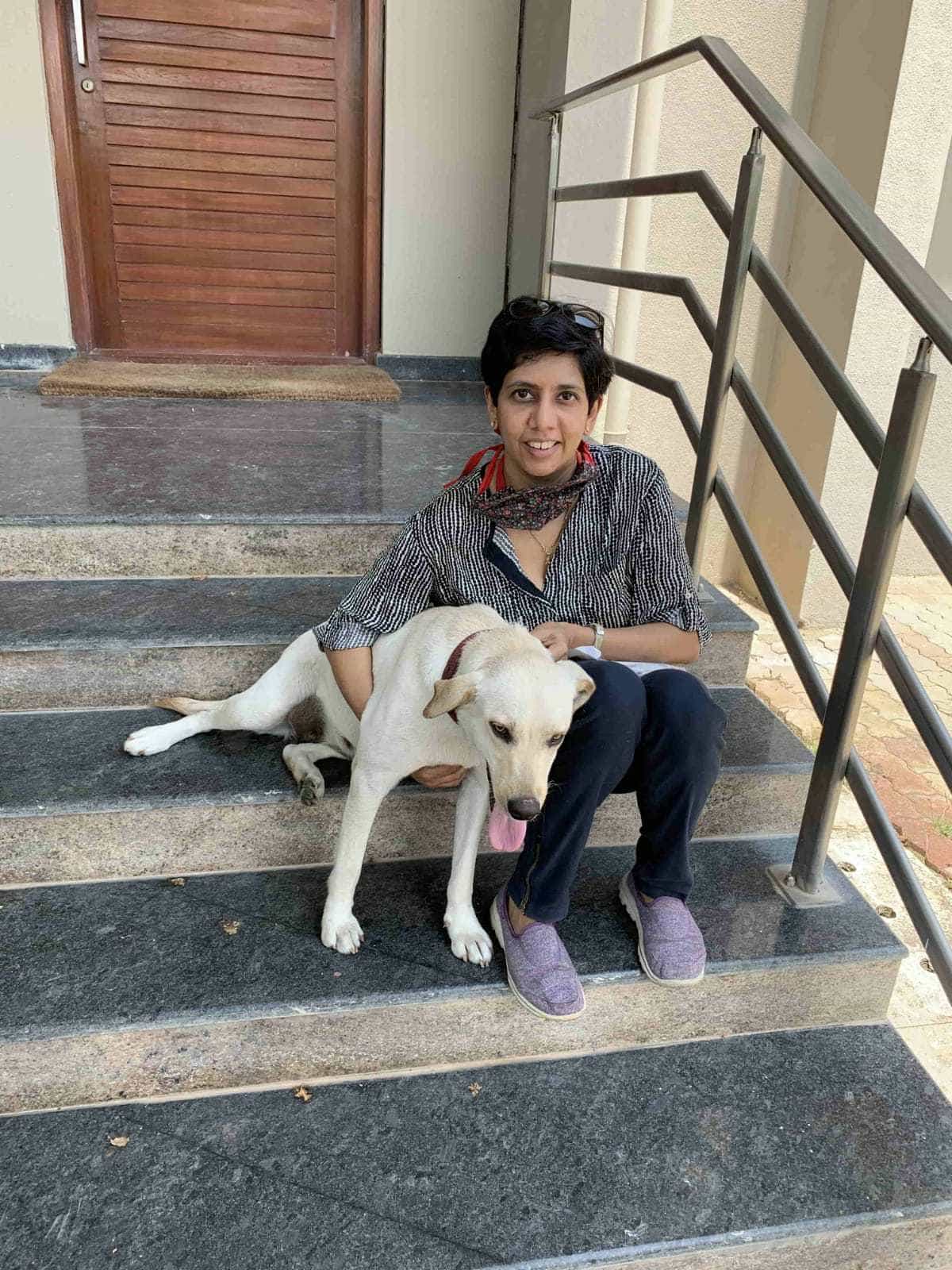
About Sajitha’s house, Jyothika says, “The interesting thing about this home was that because it was built during different periods, every floor was built in a different style, and had different windows and doors. When we rebuild a house, we want to save as much as we can. Some doors, which could not be reused, were converted as legs for furniture.”
The architects tried to source as many items of furniture as possible and only purchased teakwood block boards to make the beds. They also sourced a carved ornate teak main door in Chettinad style. Another Chettinad feature is the athangudi skirting used to break the monotony of the floor.
“We salvage everything we can. We even used the foundation stones when we rebuilt this house. We also got some unique pieces of furniture for the house — a centre table from Jaipur, which we reworked and raised to a dining table height. We also repurposed an old bookshelf,” says Jyothika.
For Sajitha, pièce de résistance is the ‘Throne’ that the architects built for her. They repurposed an elephant howdah from Rajasthan into a comfortable couch, which she uses for reading and just relaxing.
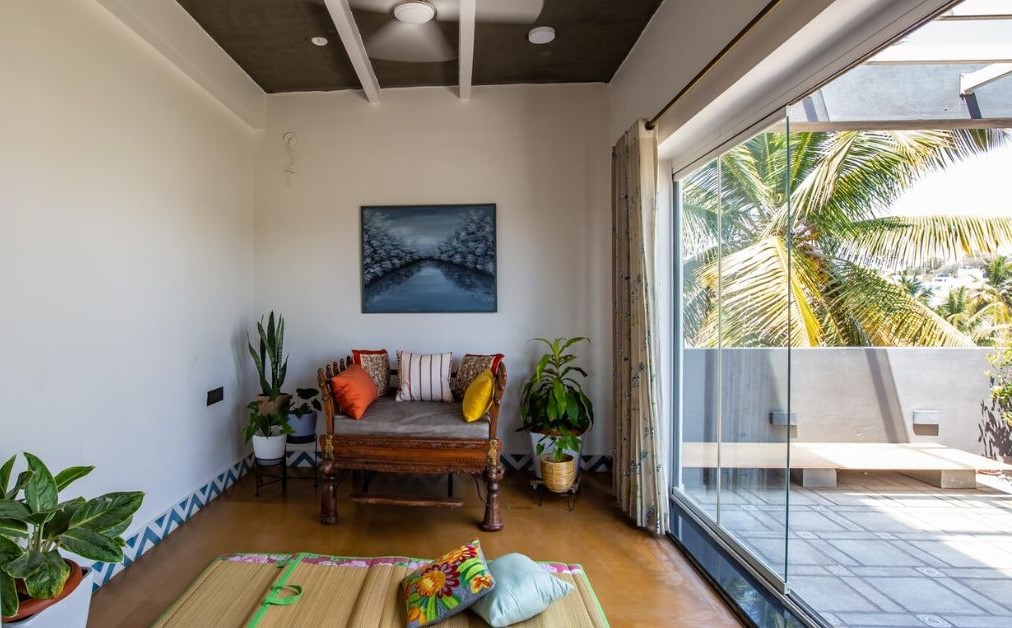
The house also has vertical gardens as there was no space outside. The terrace is also completely green, where they grow bougainvillaea, and herbs like tulsi, coriander, and green chillies.
The architects also created a skylight for the staircase using used liquor bottles. “We sandwiched used liquor bottles — white, green, red, and brown, between two sheets of glass. It looks quirky and wonderful. As a bonus, the staircase is bathed in the colours of these bottles during the day, creating a vibrant yet surreal look,” says Jyothika.
They also did not smooth plaster the ceiling, and retained the matte finish to give it an unfinished texture. To keep the home light and airy, they used terracotta jaali blocks for the entire staircase. A combination of these blocks and a vertical garden form the screen walls for the external staircase.
“Our funda is simple — we want to get the juice out of every item present in the house. We have learned not to be wasteful since childhood, and we are applying that to our work now. We refurbish every house that we work on, no house is built new. It takes a little more time, but I love the challenge,” says Jyothika.
Edited by Divya Sethu
If you found our stories insightful, informative, or even just enjoyable, we invite you to consider making a voluntary payment to support the work we do at The Better India. Your contribution helps us continue producing quality content that educates, inspires, and drives positive change.
Choose one of the payment options below for your contribution-
By paying for the stories you value, you directly contribute to sustaining our efforts focused on making a difference in the world. Together, let’s ensure that impactful stories continue to be told and shared, enriching lives and communities alike.
Thank you for your support. Here are some frequently asked questions you might find helpful to know why you are contributing?


This story made me
-
97
-
121
-
89
-
167











